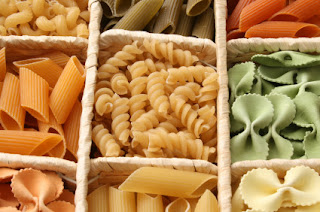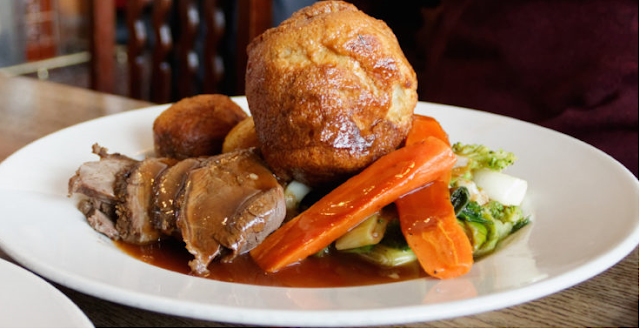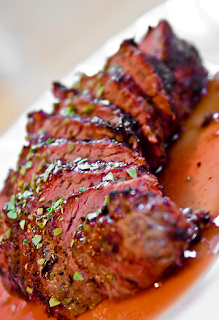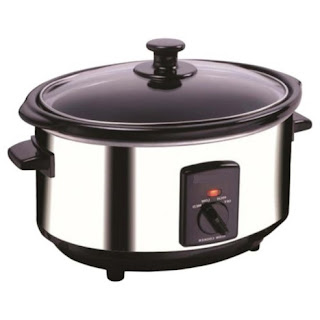Pasta
In this issue, I'm going to talk about
pasta. When I talk with people about quick meals, we always end up
discussing the fact that people like pasta, but don't know what to do
different with it. They simply boil up the pasta, dump a cheese or
tomato sauce on it, and may even top with grated cheese, and that's
it.
There are loads of different pasta
dishes you can make, some quick, some not so quick. You have so many
varieties of pasta to choose from, different ways to sauce and dress
pasta. You can have pasta in salads, as a salad, in soups, in stir
fry's, with cheese or vegetables, there are so many different
variations.
Let's start with the pasta itself.
Pasta is basically noodles, made from an unleavened dough (usually
made from durum wheat flour) mixed with water or eggs and formed into
sheets, strips or shapes, of which are then cooked in boiling water.
You can get dried or fresh pasta, or you could even have a go at
making it yourself.
Pasta is traditionally thought of as
being a staple food source of Italian cuisine, the earliest
references being from 1154 a.d., being that of strings of semolina, dried then boiled.
There are actually earlier references from outside of Italy, such as
The Jerusalem Talmud, which records that Itrium,
a kind of boiled dough, was common in Palestine from the 3rd to 5th
centuries AD. An early 5th century cookbook describes a dish called
lagana consisting of layers
of dough with ground or shredded meat, a possible ancestor of
modern-day lasagna. References
go back to the 2nd and even 1st centuries, remarking that in Britain,
fine strips of flour and water dough being fried and eaten as a
common place food source, sold cheaply as a snack food, like oysters were at the time. Gnocchi
was thought to have been introduced by the roman armies, from their
expansion of the roman empire into the Middle East.
In 2002,
Archaeologists at a site in Lajia, China, found an earthenware bowl
containing the world's oldest known noodles, estimated through carbon
dating to about 4000 years.
There are hundreds
of different types of pasta, of which I'm not going to list here,
just see what is in your local supermarket, and take you pick. Dried
pasta is cheap enough to experiment with, so try different types.
Traditionally, in
England, on a Sunday, you would have a Sunday Roast. In Italy, Sunday
is the tradition day for pasta, and, like a roast, it can be eaten
any day of the week. It has been said that it is possible to eat
pasta every day of the year, and not produce the same dish twice.
I often advise
people about the benefits of pre-cooking stuff for later use, pasta
is no exception. Simply boil a pan of seasoned water to a rolling
boil, add a glug of olive oil if you wish, this will stop the pasta
sticking. If you like, add half a veg or chicken stock cube to the
pan. Once cooked, cool down in cold water, drain thoroughly and store
in the fridge for up to three days. If you have different types of
pasta, simply cook as required, because it doesn't take long to cook
pasta anyway.
Perhaps the most
famous pasta dish that people known, would have to be Spaghetti
Marinara. So I think I'll start with this one.
Marinara sauce is
originally from Southern Italy, and is used for America's favourite,
Spaghetti & Meatballs. However, Marinara actually means Mariner
or Fisherman, and was traditionally use for fish and seafood based
pasta and rice dishes, but these days it is used to complement
anything you feel like using, such as meatballs, sausage or bacon.
Spaghetti Alla
Marinara
Spaghetti Alla
Marinara translates to 'Mariners Wife Spaghetti', and is an all time
favourite
Cook
your spaghetti as above, while this is cooking, you want to make the
sauce. The sauce is basically tomatoes (tinned
or fresh), garlic, herbs and
onions, which makes the basic
sauce called Pomarola. I like to use finely sliced celery to help to
flavour and season. With all
rustic recipes, there are no rules, so add red or spring onions if
you wish, finely chopped bacon, what ever you want.
The
Meatballs can be bought, or you can make them. Simply mix your mince,
beef and pork works well, with finely diced onion, mixed herbs,
seasoning, add some
breadcrumb and an egg to bind. Get your hands in and mix it all
together. After washing your hands and drying, flour your hands and
roll the mix into a sausage, which you can cut into even pieces, and
roll into balls. Fry off the meatballs for
just a couple of minutes, then drop them into the sauce and they will
cook in the sauce as it simmers.
The
pasta takes 3 to 5 mins to cook, the
sauce is
around ten to fifteen minutes, meatballs can be 10 minutes in the
sauce, just remember that the bigger they are, the longer they will
take to cook. I like to leave the sauce simmering for about 30
minutes, making the meatballs lovely and tender. When cooked, serve
over pasta. The original version of this would be to choose a nice mix of seafood and replace the meatballs for the mix. Simple!
Cheese
Next,
I want to show you a quick cheese sauce pasta. The
trick to this is in the cheese sauce. There
are so many ways of making cheese sauce for pasta, with literally
hundreds of cheeses to choose from, but we want quick and simple. I'm
going to show you a bacon and cheese pasta, but you can use
prawns, pea's, fish or scallops, pretty much anything really, and
mixing cheddar with blue cheese can give it strong flavours and
textures.
Cook
off a couple of rashers of bacon, either in a pan or the microwave,
then chop into pieces. The
pasta needs to be cooked (or reheated), and ready for the sauce. I
simply put a frying pan on
the heat and pour in
half a carton of cream.
When
cooking with cream, it must be either double cream or whipping cream,
because of the higher fat
content it is easier to thicken up, single
cream is pretty much used only for pouring on desserts. (Single
cream can be used, but you will need a thickening agent such as corn
flour, arrowroot or even an egg yolk.)
As the
cream starts to heat, add a knob of butter, a little garlic (puree is
fine) and a pinch of herbs, when the butter has melted, add chopped
bacon and grated cheese, when the cheese starts to melt, add the
pasta, and cook till it bubbles. Done
Ravioli
Ravioli
is a pasta that contains a filling. Small parcels of mince or feta
cheese, or maybe
a seafood paste, dropped into boiling water and served with a sauce.
You can easily make ravioli
by using lasagne sheets. They
can be cut to size square or you can use a biscuit cutter and make
half moon shapes.
To
make an easy mushroom filling, Chop a couple of mushrooms as small as
possible and fry in a little butter with seasoning, drain
and mix with cream cheese.
Ravioli,
like meatballs, can be made to your own size and preference.
Put a
pan of water on to boil. If
using dried sheets, soak in warm water to make them usable. First,
cut the sheet to size and paste with beaten egg, place filling in the
middle of one half the sheet and fold over. If you take a fork and
pinch the edges, it will
ensure the parcel is sealed. The sealed parcel can be lowered into
the boiling water and should be cooked in around 3 or 4 minutes.
You
can serve with a tomato sauce or a cheese sauce, or with a garlic
dressing. Easily done, simply mix olive oil, finely diced onion or
shallot, finely cut basil or mixed herbs, and either fine chopped
garlic or garlic puree and
season. Warm in a pan, but don't boil, and pour over the ravioli
Sweet Chilli
One simple thing that you can do is take a basic pasta, such as Spaghetti or Tagiatelle, and dress it. One way is to mix olive oil and pesto, and dress the pasta by simply coating it with the mix. One I enjoy personally is just a dollop of sweet chilli with two drops of soy sauce, throw them around a hot pan for literally one minute and serve with scallops and tiger prawns. Lush!
Corzetti
Corzetti is a very simple pasta to make. Either make or buy pasta sheets, and then cut into disks. Traditional corzetti is made from flour, water and salt, cut into disks, then stamped, or embossed with a small hand-held press, and look like large dough coins. When I make this pasta I don't emboss, but I do add a little white wine to the mix. simply boil, plate and serve with a sauce, which is traditionally a pesto or mushroom sauce.I like to serve it up as it is served in Novi, Ligure, which is a sausage and mushroon sauce (I like to add a bit of red wine to the sauce.
So get your pasta, make it or buy it, experiment with it , boil it, fry it, pasta bake it, chilli's, peppers, burgers, sausage, what ever you wanna do with it. There are no rules, pasta is never offended, It's wonderful stuff.
I might even try a pasta pizza, mmm I wonder?
Bye for now
















Comments
Post a Comment